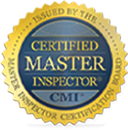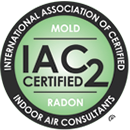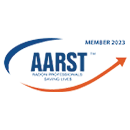What is Radon and Why Should You Test for It?
Radon is a silent threat lurking in many homes and buildings, often going unnoticed until it poses significant health risks. Understanding what radon is, its sources, and the importance of testing can help protect you and your loved ones from its harmful effects. This blog delves into the intricacies of radon, its health implications, and the steps you can take to ensure a safe living environment.
Understanding Radon
What is Radon?
Radon is a colorless, odorless, and tasteless radioactive gas that forms naturally from the decay of uranium in soil, rock, and water. Being a noble gas, radon does not easily react with other elements, allowing it to seep into the air and accumulate in enclosed spaces like homes, schools, and workplaces. Since it cannot be detected by human senses, the only way to know if radon is present is through testing.
Sources of Radon
Radon originates from the natural breakdown of uranium, which is present in varying concentrations in the Earth’s crust. This decay process releases radon gas, which then migrates through the soil and can enter buildings through cracks in foundations, gaps around pipes, and other openings. Certain geological formations, such as granite and shale, are more likely to emit higher levels of radon. Additionally, activities like mining and drilling can influence radon levels in specific areas.
Health Risks Associated with Radon Exposure
Lung Cancer and Radon
The primary health risk associated with radon exposure is lung cancer. Radon decay products emit alpha particles that can damage the cells lining the lungs when inhaled. Over time, this damage can accumulate, increasing the risk of developing lung cancer. According to health authorities, radon is the second leading cause of lung cancer after smoking and the leading cause among non-smokers. The risk is particularly high for individuals exposed to elevated radon levels over extended periods.
Who is at Risk?
While everyone exposed to high levels of radon is at risk, certain groups are more vulnerable:
- Smokers and Former Smokers: The combined effect of smoking and radon exposure significantly increases lung cancer risk.
- Long-term Residents: Individuals who spend a considerable amount of time in a radon-prone area or building are at higher risk.
- Children and the Elderly: Younger and older individuals may be more susceptible to the harmful effects of radon due to developing or compromised immune systems.
Testing for Radon
Why Testing is Essential
Given that radon is undetectable without specialized equipment, testing is the only reliable method to determine its presence and concentration in your living spaces. Radon testing is crucial because:
- Prevalence: Radon is present in varying levels across different regions, making it a widespread issue.
- Silent Hazard: Without testing, there are no visible signs of radon, allowing it to accumulate unnoticed.
- Health Implications: Early detection through testing can prevent long-term health issues, particularly lung cancer.
How to Test Your Home
Testing for radon involves using specific devices designed to measure the concentration of radon gas in the air. There are two main types of radon tests:
- Short-term Tests: These tests typically last from 2 to 7 days and are useful for getting a quick assessment of radon levels. They are often used for initial screening.
- Long-term Tests: Spanning 90 days to a year, long-term tests provide a more accurate representation of radon levels throughout different seasons and conditions.
Testing Methods Include:
- Passive Devices: Such as charcoal canisters and alpha track detectors, which do not require power and are placed in the lowest lived-in areas of the home.
- Active Devices: Like continuous radon monitors, which use electronic systems to provide real-time readings.
After testing, it’s advisable to consult with a professional to interpret the results and determine necessary actions if high radon levels are detected.
Mitigating Radon Levels
Prevention and Reduction Techniques
If testing reveals elevated radon levels, several strategies can help reduce its concentration in your home:
- Improving Ventilation: Enhancing airflow can dilute radon levels. This can be achieved by opening windows, using fans, and ensuring proper ventilation in crawl spaces and basements.
- Sealing Cracks and Openings: Closing gaps in floors, walls, and foundations prevents radon from entering the home.
- Installing Radon Barriers: Physical barriers can block radon from seeping into the living spaces, especially during the construction of new buildings.
Professional Radon Mitigation Services
For significant radon issues, professional mitigation services may be necessary. These experts employ advanced techniques to lower radon levels effectively:
- Sub-slab Depressurization: This is the most common and effective method, which involves installing a vent pipe system and fan to redirect radon from beneath the building to the outside.
- Sump Hole Depressurization: Similar to sub-slab, but targets sump pits specifically.
- Block Wall Venting: Used in homes with block walls, directing radon away from the building.
Professional mitigators can assess your home’s unique characteristics and recommend the most suitable approach to ensure long-term radon reduction.
Radon in Water
Understanding Waterborne Radon
While radon is primarily a concern in the air, it can also be present in water, especially in areas with high uranium content in groundwater. When water containing radon is used for showering, cooking, or other household activities, radon gas can be released into the air.
Mitigation Strategies for Waterborne Radon
To address radon in water, consider the following methods:
- Aeration Systems: These systems mix air with water to release radon gas before the water enters the home.
- Granular Activated Carbon (GAC) Filters: GAC filters can adsorb radon from water, effectively reducing its concentration.
- Point-of-Entry Systems: Installing these systems ensures that all water entering the home is treated for radon.
Testing both air and water is essential to determine the extent of radon contamination and the appropriate mitigation measures.
Radon Awareness and Community Action
Raising Awareness
Educating communities about radon and its risks is crucial for widespread prevention. Awareness campaigns can inform homeowners, renters, and builders about the importance of testing and mitigation. Providing resources and information on how to test for radon and interpret results empowers individuals to take proactive measures.
Policy and Building Standards
Implementing policies that require radon-resistant construction techniques in new buildings can significantly reduce radon exposure. Building codes can mandate features like gas-permeable layers, vent pipes, and sealing systems that prevent radon infiltration. Additionally, offering incentives for radon mitigation can encourage homeowners to address high radon levels promptly.
Community Testing Programs
Organizing community-wide testing initiatives can identify high-radon areas and prioritize mitigation efforts. These programs can provide free or subsidized testing kits, making it easier for residents to assess their homes. Collaboration with local health departments and organizations can enhance the effectiveness of these programs.
The Future of Radon Research and Mitigation
Advances in Detection Technology
Ongoing research aims to develop more accurate and user-friendly radon detection devices. Innovations include smart sensors that provide real-time monitoring and integrate with home automation systems. These advancements will make it easier for homeowners to track radon levels continuously and respond promptly to fluctuations.
Improved Mitigation Techniques
As technology evolves, so do mitigation strategies. Future methods may offer more efficient and cost-effective solutions, reducing the barriers to implementing radon reduction measures. Research into sustainable and environmentally friendly mitigation options is also expected to enhance long-term effectiveness.
Enhanced Public Health Strategies
Integrating radon awareness into public health initiatives can lead to more comprehensive strategies for prevention and education. Collaborating with healthcare providers to include radon screening as part of routine health assessments can identify at-risk individuals earlier, facilitating timely intervention.
Conclusion
Radon is a pervasive yet often overlooked environmental hazard that poses significant health risks, particularly lung cancer. Understanding what radon is, recognizing the sources and risks associated with it, and taking proactive steps to test and mitigate its presence are essential for ensuring a safe living environment. By raising awareness, implementing effective testing and mitigation strategies, and fostering community action, we can combat the silent threat of radon and protect public health for generations to come.








